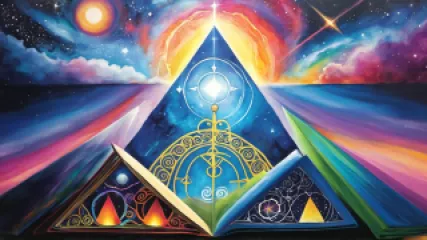Mastering Dream Interpretation: Your Ultimate Guide
Have you ever woken up from a dream feeling puzzled or intrigued? Dreams have long been a source of fascination for humans, and throughout history, people have sought to understand the hidden messages and symbolism within them. If you're curious about what your dreams might be trying to tell you, you're in luck! In this ultimate guide to dream interpretation, we will explore the various theories, techniques, and tools that can help you unlock the secrets of your subconscious mind.
The Importance of Dream Interpretation
Dreams serve as a window into our unconscious thoughts, desires, and fears. They provide valuable insights into our emotional state and can help us gain a deeper understanding of ourselves. By interpreting our dreams, we can uncover hidden meanings, resolve inner conflicts, and gain clarity about our waking lives.
While dream interpretation is a deeply personal journey, it can also be a shared experience. Many cultures throughout history have placed great importance on dreams, using them as guidance for decision-making, problem-solving, and spiritual growth. By mastering the art of dream interpretation, you can tap into this ancient wisdom and harness the power of your dreams.
Theories of Dream Interpretation
Over the years, various theories have emerged to explain the meaning behind dreams. Here are some of the most prominent ones:
1. Psychoanalytic Theory
Sigmund Freud, the father of psychoanalysis, believed that dreams were a pathway to the unconscious mind. According to Freud, dreams are a reflection of our repressed desires and unresolved childhood conflicts. By decoding the symbols and imagery within dreams, we can gain insight into our deepest desires and fears.
2. Cognitive Theory
The cognitive theory of dream interpretation suggests that dreams are a product of our brain's attempt to make sense of random neural activity during sleep. According to this theory, dreams are not inherently meaningful but are rather a result of the brain's natural information processing mechanism.
3. Spiritual and Metaphysical Interpretation
Many spiritual and metaphysical traditions believe that dreams are a way for the universe or higher powers to communicate with us. In these interpretations, dreams are seen as messages from the divine or a reflection of our spiritual journey. Symbols and archetypes within dreams are believed to hold sacred meanings.
Tools and Techniques for Dream Interpretation
Now that we've explored the theories behind dream interpretation let's dive into some practical tools and techniques that can help you decode your dreams:
1. Dream Journaling
Keeping a dream journal is an essential practice for anyone interested in dream interpretation. By recording your dreams immediately upon waking, you capture important details and emotions that may fade from memory throughout the day. Over time, patterns and recurring symbols may emerge, providing valuable insights into your dream landscape.
2. Symbol Analysis
Symbols play a crucial role in dream interpretation. They can be highly personal and vary from person to person. One way to analyze symbols in your dreams is through free association. Write down the first word or phrase that comes to mind when you think of a particular symbol. This exercise can help uncover underlying emotions or experiences associated with the symbol.
3. Lucid Dreaming
Lucid dreaming is the ability to become aware that you're dreaming while still in the dream state. It allows you to actively engage with your dreams, ask questions, and explore their meanings. Lucid dreaming can be cultivated through various techniques, such as reality checks, meditation, and keeping a dream journal.
4. Professional Dream Analysis
If you're seeking a deeper level of insight and guidance, consider consulting a professional dream analyst or therapist specializing in dream work. A skilled interpreter can help you navigate the complexities of your dreams and provide a fresh perspective on their meanings.
Common Dream Symbols and Their Meanings
While dreams are highly personal and subjective, certain symbols tend to appear frequently across different individuals. Here are some common dream symbols and their possible interpretations:
- Falling: Represents a lack of control or insecurity in waking life.
- Flying: Symbolizes freedom, liberation, or a desire for escape from constraints.
- Water: Signifies emotions, intuition, and the flow of life.
- Being Chased: Reflects feelings of anxiety, avoidance, or the need to confront a problem.
- Death: Often symbolizes transformation, change, or the end of a phase in life.
- Teeth Falling Out: Represents a fear of aging, loss of power, or concerns about appearance.
- Nudity: Symbolizes vulnerability, authenticity, or a desire for self-expression.
- Animals: Each animal carries its unique symbolism. For example, a snake may represent transformation or healing, while a lion may symbolize strength and leadership.
The Power of Dream Interpretation
Engaging in dream interpretation can have profound effects on your personal growth and well-being. By exploring the hidden messages within your dreams, you can gain valuable insights into your subconscious mind, resolve inner conflicts, and make more informed decisions in your waking life.
Remember, dream interpretation is a deeply personal process, and there are no strict rules or universal meanings. Trust your intuition and explore the symbols and themes that resonate with you the most.
In conclusion, mastering dream interpretation is an ongoing journey that requires patience, curiosity, and self-reflection. By delving into the rich symbolism of your dreams and exploring various techniques, you can unlock the hidden wisdom of your subconscious mind. Whether you choose to interpret your dreams online, seek professional dream analysis, or embark on your own solo exploration, the power to decipher the messages of your dreams lies within you. Embrace the adventure and let the realm of dreams guide you towards greater self-discovery and understanding.






